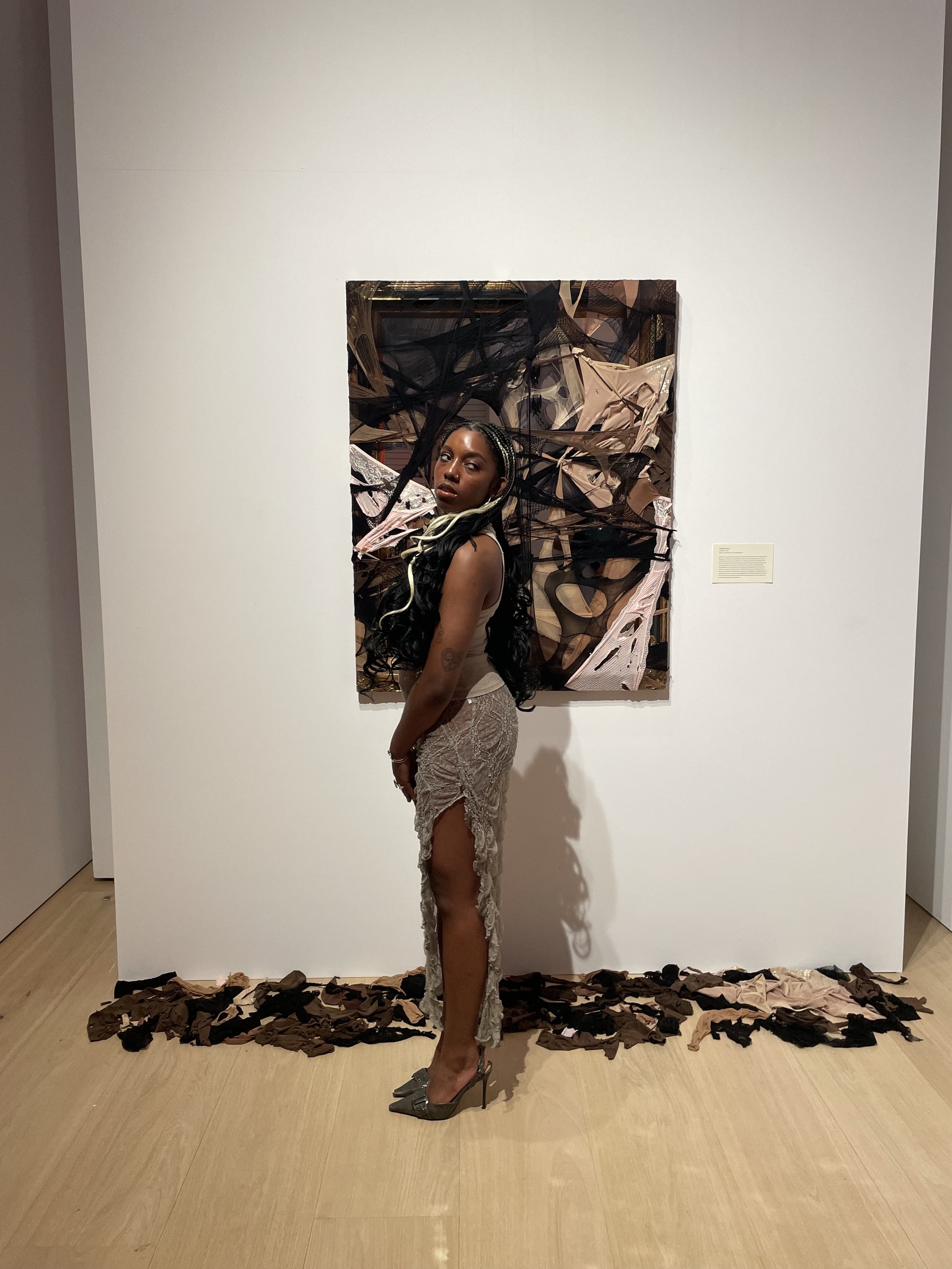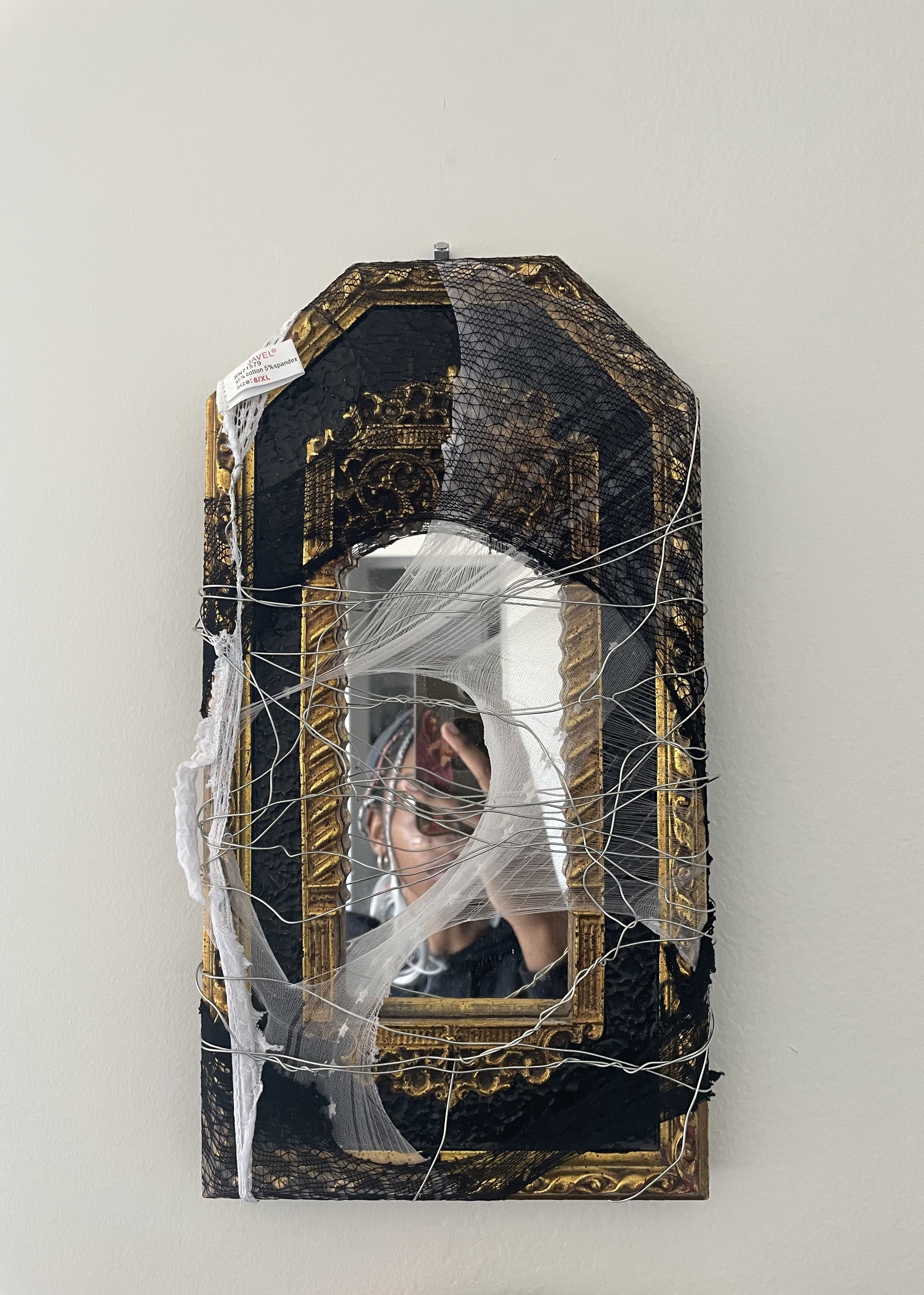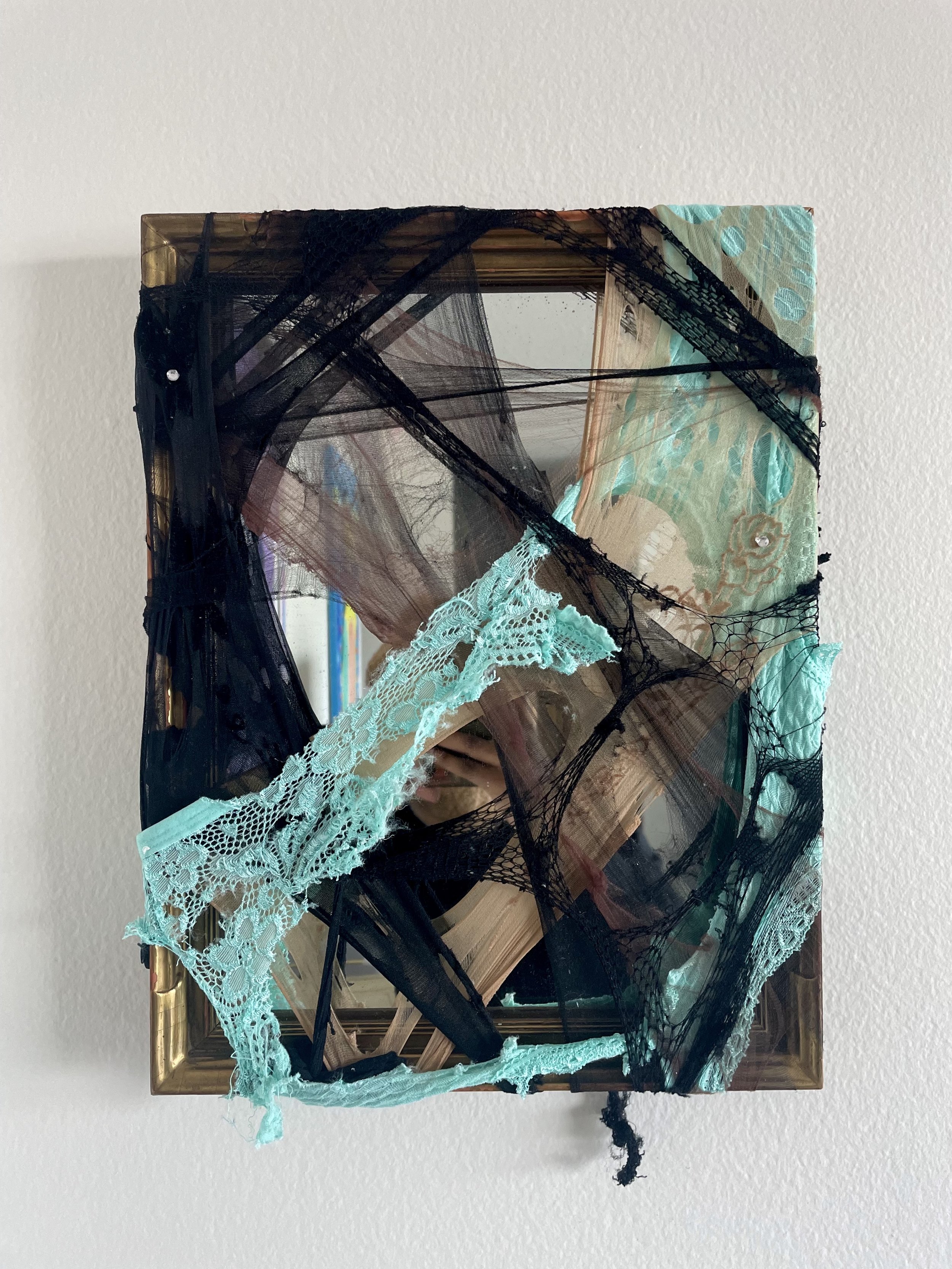afterwards. (2023, hosiery and intimate garments)
featured in the Garden of Heavenly Delights, Textured Memos show at Phillips Auction House
afterwards. (2023) is a physical representation of what lingers on after one’s most traumatic lived experiences.
After both coming down from mania & experiencing traumatic events, the mirror has served Narcisse not only as a mere reflection of herself but as a disconnected image from her being. Several times Narcisse has leaned into the mirror and experienced depersonalization, not recognizing herself in her reflection. Internal destruction to the point of being literally unrecognizable to one self, is a both confusing and terrifying experience Narcisse intends to emulate in this work.






“did you watch me burn? or when the storm turned me to ash?”
33”x 35”, hosiery, underwear, satin, wax, wire, twine, glue, on mirror. 2024.
Exhibited at Canada Gallery, Tribeca for Black Girl Fight Club’s ‘Chrysalis’ exhibition, curated by Gabrielle Narcisse & Kendra Gourgue
“did you watch me burn? or when the storm turned me to ash?” explores the parallels between natural disasters and emotional and traumatic experiences, particularly related to PTSD and Bipolar disorder. Drawing from moments in the artist’s life that felt as intense and destructive as disasters such as wildfires, forest fires, or storms, she incorporates the use of flames into each part of the piece’s construction process as representation of intense emotional turmoil. Upon reflecting on what halted the metaphorical fires in her life: it has been varied. Sometimes a gentle rain sufficed and other times a heavy storm was necessary, perhaps something just as destructive as a wildfire stopped it. However, what remains after these metaphorical "rainfalls" isn't lush greenery but ash: the quiet, bleak, grey, and black aftermath of destruction; a skeleton or remnants of what she was before. Elements of fire and water are motivators of transformation. “did you watch me burn? or when the storm turned me to ash?” is akin to the transformative process of the butterfly emerging from its shelter, its chrysalis. The process of metamorphosis is of nature’s necessity, just as disaster is.
“I’m unsure if I believe in fate, but perhaps my personal processes of destruction and transformation were necessitated by the universe as well. I have let the rain wash over me and continuously sprout my new wings that were always waiting to be realized again. Fire is dangerous and harmful yet beautiful. I find beauty in the brokenness, beauty in how destruction transforms, beauty in resilience.”


these walls will talk, explores trauma as confined to a physical space. Within the walls of our homes, other’s homes, and other sites – trauma may live and breathe whether the traumatic incident continues to be persistent, or a solitary event that occurred there. When wandering the halls of a place we may have once found comfort and safety in, trauma can infect the site and spread its webs throughout. What was once your bed may never be just your bed again, that one building you walk past once in a while may always set an alarm in your body and mind, and driving through your hometown may no longer stir feelings of comfort.
No deer wander across your lawn. No trees will shelter you.



that night, i also chose white.
14.5 x 7.5”, vintage mirror, wire, white underwear, hoisery.
the night i chose white.
i couldn’t find them as i was leaving.
but i needed to leave anyway.
i left a lot behind me within that place.
including a pair of white panties.
ive grappled with the concept of “choice” in the matter.
i couldn’t have chosen much that night.
but i did
choose white.



undeserved. indefensible. 14”x11”, hosiery, underwear, stretched on antique mirror
Undeserved. Indefensible. (2024) explores the enduring impact of rape, portraying the mental battle where survivors grapple between self-blame, external blame, and the nature of the assault. It signifies a step in processing trauma when one finally acknowledges the undeserved nature of the incident and believes in the inability to justify the act or the perpetrator. The artwork reflects the haunting presence of these challenging thoughts, capturing the difficulty of reconciling and accepting them. Even when one accepts a different narrative surrounding their assault, it’s difficult to rid of the harmful/self-destructive thoughts that may still linger on. Despite the tattered state of the PTSD-afflicted mind and body, the piece emphasizes that brokenness can still be beautiful.
